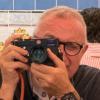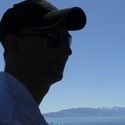Leica SL2 Firmware 2.0: 187 MP Multishot Mode
-
Recently Browsing 0 members
- No registered users viewing this page.
-
Similar Content
-
- 13 replies
- 322 views
-
- 5 replies
- 427 views
-
- 33 replies
- 5,682 views
-
- 6 replies
- 243 views
-
- 7 replies
- 184 views
-





Recommended Posts
Join the conversation
You can post now and register later. If you have an account, sign in now to post with your account.
Note: Your post will require moderator approval before it will be visible.